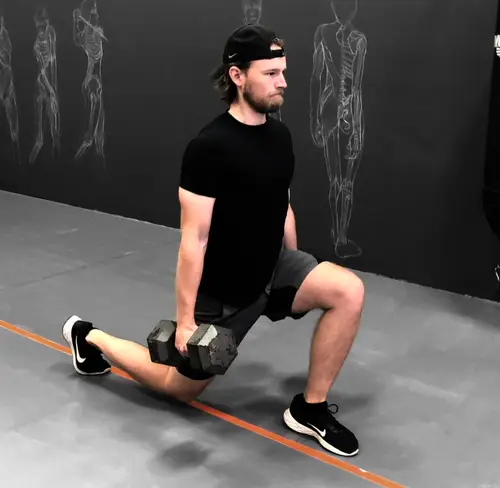THE BENEFITS OF THE WALKING LUNGES
As a personal trainer, I’m often asked about effective exercises that require little or no equipment. One exercise I frequently recommend is walking lunges. This functional movement has numerous variations that can be tailored to each person’s unique needs and goals. Lunges are a great way to develop quadriceps and glutes, which are critical for mobility and stability.
MORE THAN LEGS
Walking lunges don’t just work the legs. Properly executing a walking lunge also strengthens the hip flexors and leg adductors that stabilize the hips and core. Maintaining balance during the movement engages core stabilizer muscles like the quadratus lumborum and obliques. This makes lunges an extremely functional exercise.
INTEGRATED FUNCTIONAL MOVEMENT
AN ADDED BENEFIT OF THE WALKING LUNGES
Mastering the walking lunge requires coordinated movement and stability from the ankles, knees, and hips. This makes it an integrated functional exercise that trains multiple joints and muscles simultaneously. For people with knee or hip injuries, it can help build strength and stability to prevent re-injury (but must be closely monitored). The controlled lunging motion also improves the flexibility of the hip adductors and hamstrings.
NEVER A “ONE SIZE FITS ALL”
Of course, as with any exercise, walking lunges aren’t suitable for every person. Individuals with limited hamstring or hip flexibility or existing knee problems should avoid lunges until cleared by a physical therapist. It’s best to start slowly and focus on proper form over depth or distance at first. Mastering the basics allows for safe progression over time.
VERSATILE FUNCTIONAL TRAINING
The walking lunge is one of the most versatile functional exercises because it simultaneously trains balance, strength, and coordination. Its low-impact nature and ability to target lower body muscles make it useful for both rehab and fitness training. Whether part of a warm-up or a focused strengthening routine, walking lunges offer benefits for most clients.

SUMMARY
In summary, walking lunges exemplify how a basic bodyweight, or very lightweight, movement can provide excellent functional training effects. The applications are endless, from injury prevention and rehab to general conditioning. Walking lunges are often recommended for integrated lower-body training. Performed properly and progressively, they are an exercise almost any client can benefit from.
